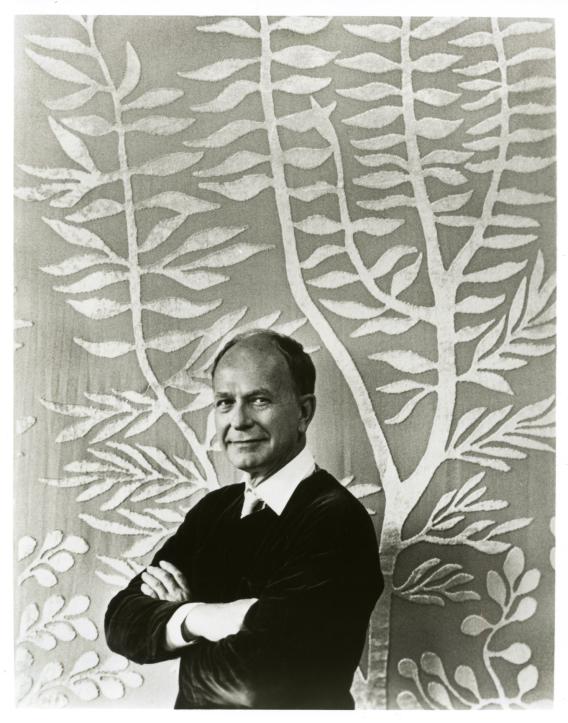
Date of Interview: May 21, 2009
Location of Interview: Larsen's Residence New York, New York
Length of Transcript: 17 pages
Audio Clips:
Biographical Summary
Jack Lenor Larsen was born in Seattle, Washington. He was the first student to graduate from the University of Washington with a B.A. in Weaving. Larsen went on to gain an M.F.A. from the Cranbrook Academy of Art in Michigan. In 1952, Larsen started his own textile studio in New York City, Jack Lenor Larsen Incorporated. It was an immediate success and grew to 31 showrooms nationally and internationally. He expanded to form Jack Lenor Larsen International in 1963, Larsen Carpet and Larsen Leather in 1973, and Larsen Furniture in 1976. Seeking inspiration, Larsen traveled to over 90 countries and worked with over 30 mills around the world. His famous clients included Frank Lloyd Wright, Eero Saarinen, Louis Kahn, and Marilyn Monroe. His designs included towels, blankets, and porcelain tableware. In 1997, after 45 years of business, Jack Lenor Larsen Incorporated merged with Cowtan & Tout.
Larsen has authored ten publications, has been the recipient of numerous awards, and has involvement with over 30 organizations relating to the textile industry. His fabrics are featured in sixteen museums around the world including the Museum of Modern Art, New York, the Victoria and Albert Museum, London, and the Muse des Arts Dcoratifs, Paris. Jack Lenor Larsen is one of only five Americans to have exhibited at the Palais du Louvre, Paris.
Interview Topics
Jack Lenor Larsen talks about his weaving background; the difference between the Larsen Design Studio and the parent company; his need to control the design and manufacturing process to ensure a quality product; his global travels to find new mills; the creative process of designing innovative textiles; and the value he placed on creativity.

Laotian Ikat (1972) A Homage to Jim Thompson Collection 98.022.055

Magnum (1970) Anthology Collection 98.022.160
Funding for this oral history was provided by a Craft Research Fund Grant from the University of North Carolina, Center for Craft, Creativity, and Design.





